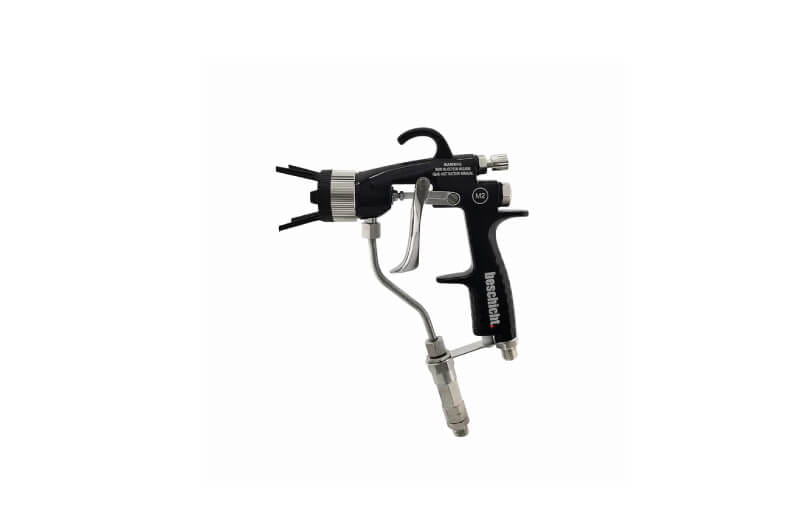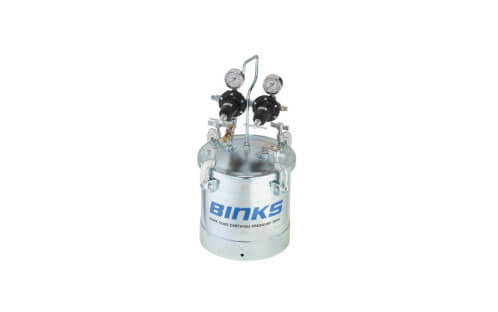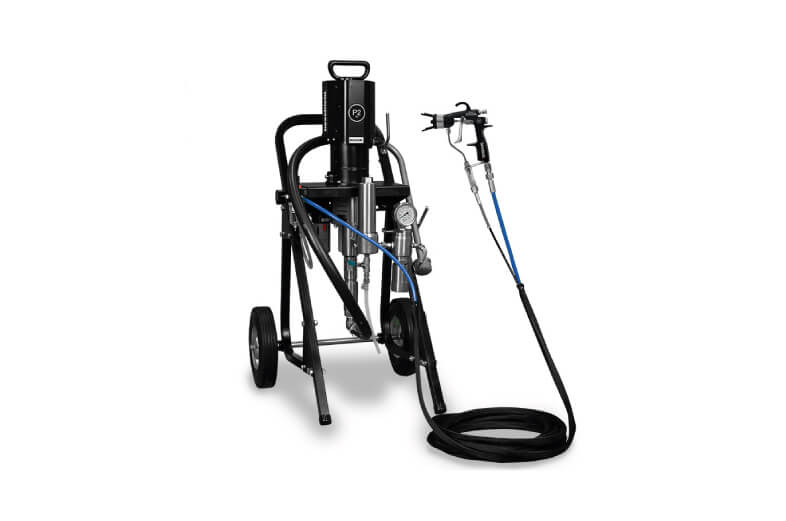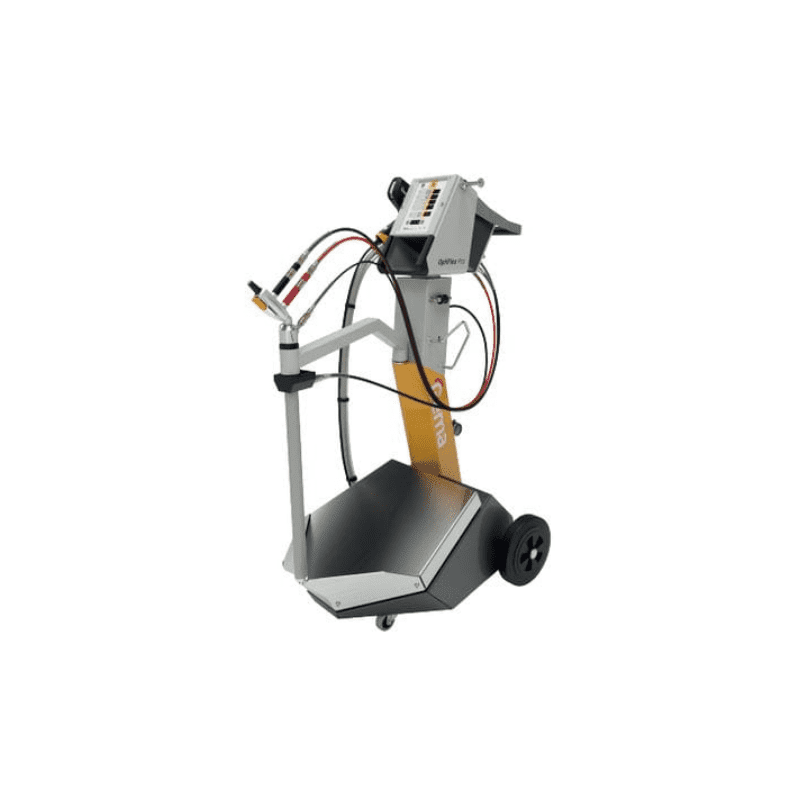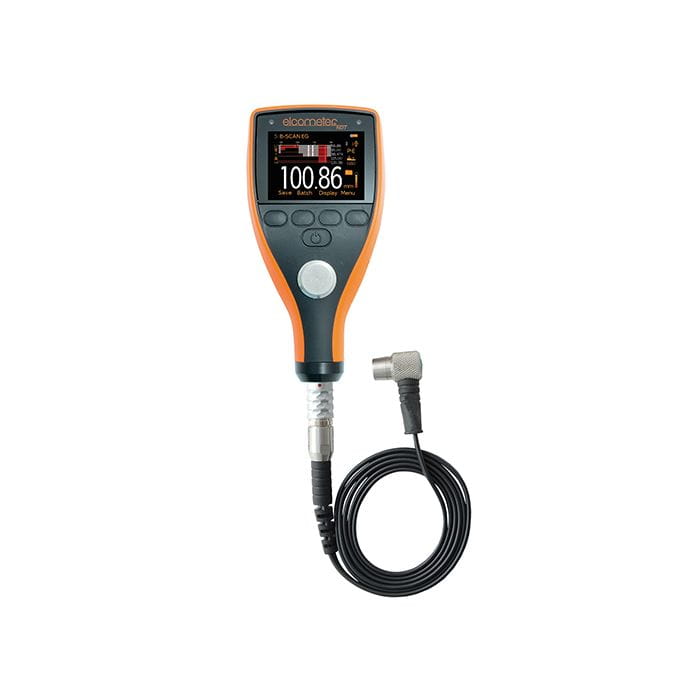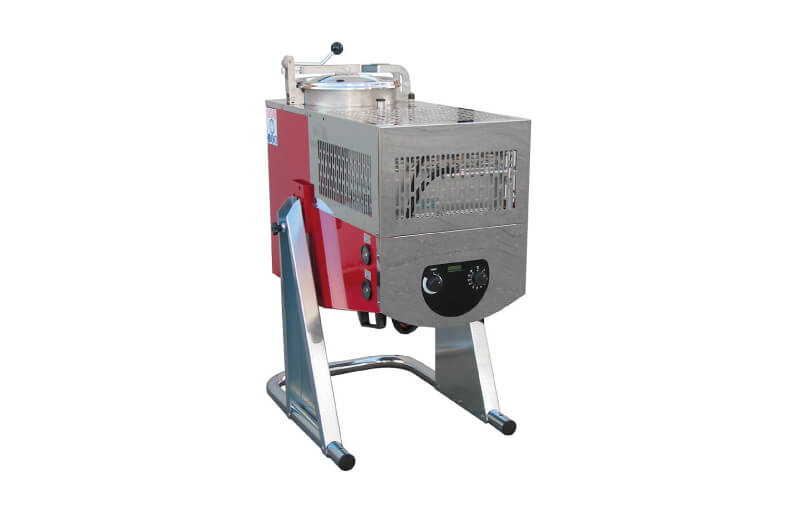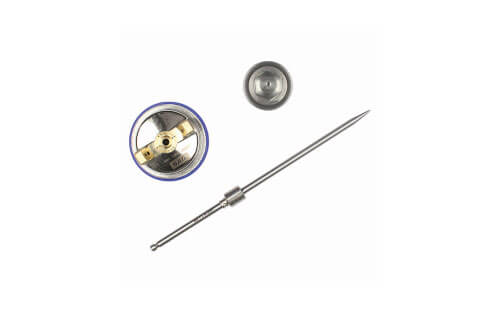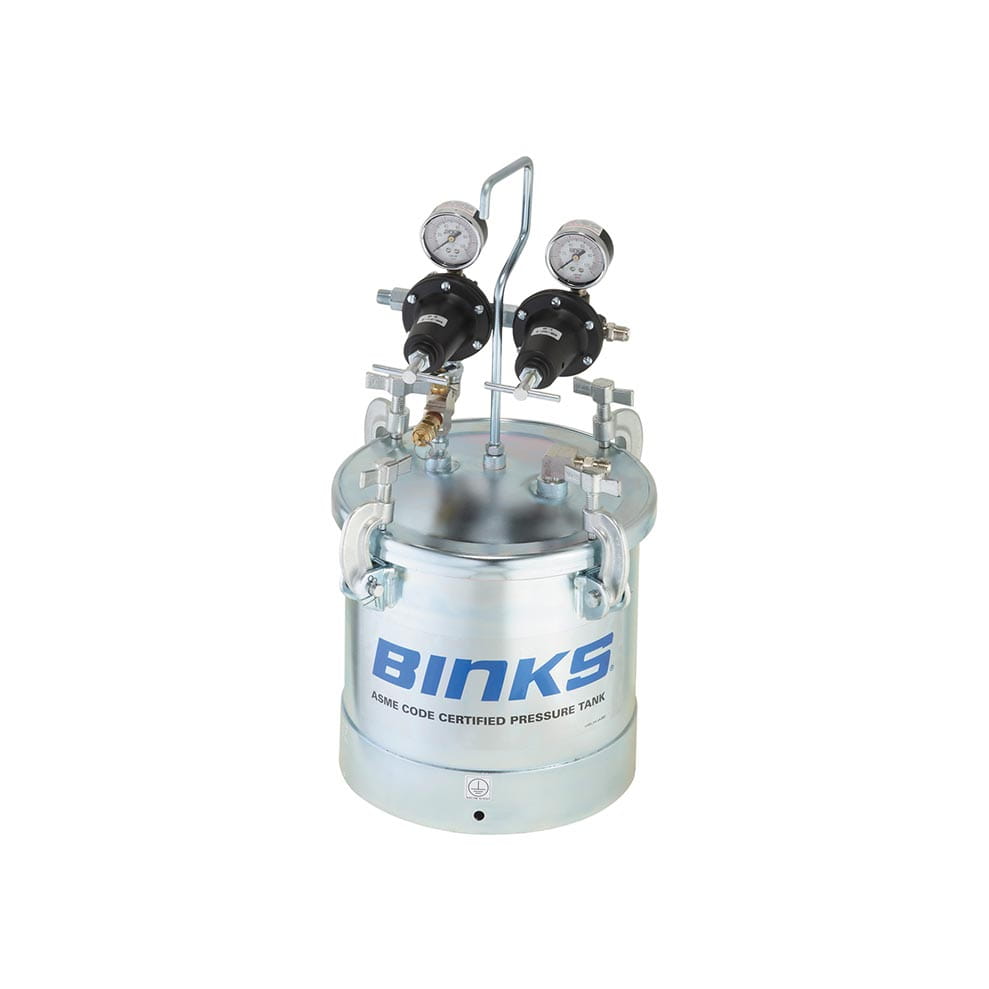10-litre stainless steel pressure vessel with direct-drive pneumatic agitator
€2,589.68*
% €3,320.10* (22% saved)Ready for shipping in 1-3 days
Scope of delivery
Binks pressure vessels are used to prepare, thin and condition coating material, to stir continuously if necessary, and then to provide the material in large quantities while maintaining the correct spray viscosity and pressure.
- Air inlet: 1/4"
- Material outlet: 3/8"
- Pressure Max. 5.5 bar (galvanised); 7.6 bar stainless steel
Binks pressure tanks are used to prepare, thin and condition coating material, to stir continuously if necessary, and then to provide it in large quantities while maintaining the correct spray viscosity and pressure.
Product overview Binks 10 litre pressure vessel
- CE-approved and standardised according to the current guideline 97/23/EG for pressure devices
- High-grade steel construction with forged steel clamps
- The range in stainless steel and galvanised carbon steel covers ALL industrial applications
- Higher pressure rating for heavier materials
- Range offers versions for all solvent-based and water-based coatings
- Internal linings reduce cleaning time and save coating material
- Top and bottom exhaust conversion kits are available
- One air regulator is standard with two optional outlets.
Coating material is prepared, diluted and conditioned in Binks pressure vessels, continuously stirred (if necessary) and then supplied in large quantities to constantly maintain the desired viscosityand the right pressure. Binks pressure vessels are equipped with easy-to-use air regulators. They can be adjusted to the desired material outlet pressure. They also have safety pressure valves and manual, rotary or oscillating agitators to ensure the best possible mixing. Binks pressure vessels are standardised, manufactured from high-quality materials, and comply with European and global pressure regulations, including PED, ATEX and ASME. Binks offers pressure vessels for every industrial application.
Agitators
Binks offers a selected range of air-driven agitators for a wide variety of applications. The series includes drum- and vessel-mounted agitators with powerful motors.
These pressure vessels are labelled with the CE marking in accordance with
the Pressure Equipment Directive 2014/68/EU and the ATEX Directive 2014/34/EU, category II 2 G X for use in zones 1 and 2. The stirrers are labelled in accordance with the ATEX Directive 2014/34/EU, category II Gc T4, and the Machinery Directive 2006/42/EC.
These pressure tanks are designed as pressure tanks to supply liquid materials at a constant, pre-set pressure of up to 7.6 bar (110 psi). The design of the tanks meets the ASME-BPV-XIII specifications.
The 183G models are constructed of galvanised carbon steel. The 183S models are constructed of stainless steel and are more suitable for use with water-based and more corrosive materials. They are suitable for use with flammable materials.
A polyethylene liner is included for easy cleaning.
PREPARATION
Mix and prepare materials according to the manufacturer's instructions. Filter the material through a fine screen to remove any foreign particles that may enter and clog the fluid passages and/or sprayers. Release the pressure according to the procedure described above. To add material to the container, remove the lid and pour the material directly into the container or tank. Replace the lid and tighten the clamps and thumb screws. The air supply line to the tank should include a filter/water separator to filter dirt out of the air and remove water and oil. Connect the material hose to the ball valve of the liquid outlet.
USE
1. Close the air inlet valve to the tank. Turn the adjusting screw on the handle of the tank controller anticlockwise until the spring is no longer taut.
2. Switch on the air supply to the tank.
3. Open the air intake valve to the container.
4. Open the ball valve of the liquid outlet.
5. Turn the handle on the pressure control valve of the container to the right to increase the container pressure.
6. Switch on the atomising air supply to the spray gun
the supply source.
7. Spray test. Please refer to the
from the documentation supplied with the spray gun.
8. If an air-driven agitator is used, start the agitator by slowly opening the needle valve. The speed of the air motor is adjusted according to the type of material being agitated.
MAINTENANCE
Clean the device as follows:
1. Switch off the air supply.
2. Follow the steps for releasing pressure.
3. Turn the T-handle adjustment screw on the container controller anticlockwise until you can no longer feel any spring tension.
4. Release the thumb screws, tilt the clamps back, and swing the vessel cover aside. Do not remove the cover from the vessel.
5. Back off the retaining ring on the
spray gun air cap nozzle by approximately three turns.
6. Switch on the air supply.
7. Put a cloth over the air cap on the spray gun and pull the trigger. The material is pushed through the hose into the container.
8. Empty and clean the container and the parts that have come into contact with the material. Use a solvent that is suitable for the material used.
9. Add the solvent to the tank.
10. Replace the lid and tighten the thumbscrews and clamps by hand.
11. Spray until clean solvent comes out.
12. Repeat steps 4 through 8.
LUBRICATION – Agitator models
Refer to the operating instructions supplied with the air motor for lubrication information. The bearings in the stirrer bearing assembly are impregnated with a non-gelling oil. No additional lubrication is required. The stirrer shaft seal does not require lubrication.
- Product number: 1015013
- Manufacturer: Binks
- Weight: 18.01 kg
Technical details
| Manufacturer number | Capacity | Am. gallons | Agitator | Pressure vessel construction | Material outlet | Air inlet | Max. pressure (bar) |
| 183G-1010-CE | 40 | 11.8 | No agitator | galvanised | 3/8 inch | 1/4 inch | 7.6 |
| 183G-1012-CE | 40 L | 11.8 | Manual agitator | galvanised | 3/8 inch | 1/4 inch | 7.6 |
| 183G-1013-CE | 40 L | 11.8 | Pneumatic agitator | galvanised | 3/8 inch | 1/4 inch | 7.6 |
| 183S-1010-CE | 40 L | 11.8 | No agitator | Stainless steel | 3/8 inch | 1/4 inch | 7.6 |
| 183S-1012-CE | 40 L | 11.8 | Manual agitator | Stainless steel | 3/8 inch | 1/4 inch | 7.6 |
| 183S-1013-CE | 40 L | 11.8 | Pneumatic agitator | Stainless steel | 3/8 inch | 1/4 inch | 7.6 |
| 183S-1510-CE | 60 L | 19.8 | No agitator | Stainless steel | 3/8 inch | 1/4 inch | 7.6 |
| 183S-1512-CE | 60 L | 19.8 | Manual agitator | Stainless steel | 3/8 inch | 1/4 inch | 7.6 |
| 183S-1513-CE | 60 L | 19.8 | Pneumatic agitator | Stainless steel | 3/8 inch | 1/4 inch | 7.6 |
| 183S-210-CE | 10 L | 2.8 | No agitator | Stainless steel | 3/8 inch | 1/4 inch | 7.6 |
| 183S-211-CE | 10 L | 2.8 | Pneumatic agitator with direct drive | Stainless steel | 3/8 inch | 1/4 inch | 7.6 |
| 183S-212-CE | 10 L | 2.8 | Manual agitator | Stainless steel | 3/8 inch | 1/4 inch | 7.6 |
| 183S-213-CE | 10 L | 2.8 | Pneumatic agitator Reduction gear | Stainless steel | 3/8 inch | 1/4 inch | 7.6 |
| 83C-210-CE | 10 L | 2.8 | No agitator | galvanised | 3/8 inch | 1/4 inch | 5.5 |
| 83C-211-CE | 10 L | 2.8 | Pneumatic agitator with direct drive | galvanised | 3/8 | 1/4 inch | 5.5 |
| 83Z-210-CE | 10 L | 2.8 | No agitator | Stainless steel lid and material-carrying parts | 3/8 inch | 1/4 inch | 5.5 |
| 83Z-211-CE | 10 | 2.8 | Pneumatic agitator Direct drive | Stainless steel lid and material-carrying parts | 3/8 inch | 1/4 inch | 5.5 |
Further manufacturer information
Register

